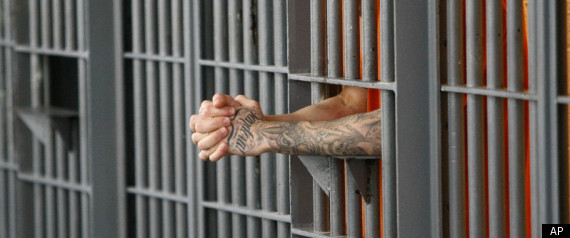 NEW YORK -- In 1986, as the crack cocaine epidemic ravaged America's inner cities, a Democratic Congress passed legislation dictating harsh mandatory sentences for possession of even small amounts of the drug, blamed for a nationwide wave of violence by dealers and addicts.
NEW YORK -- In 1986, as the crack cocaine epidemic ravaged America's inner cities, a Democratic Congress passed legislation dictating harsh mandatory sentences for possession of even small amounts of the drug, blamed for a nationwide wave of violence by dealers and addicts.The law created a staggering sentencing disparity for offenses involving crack versus powdered cocaine, filling prisons with low-level offenders and fueling a racially-charged debate over the fairness and efficacy of federal drug policy for nearly 25 years.
Under its provisions, possession of just five grams of crack cocaine -- most often sold in poor black communities -- triggered an automatic five-year prison term. It required 100 times that amount of powdered cocaine, the choice of affluent whites, to earn the same mandatory sentence.
On Tuesday, this disparity will ease dramatically as permanent new federal sentencing guidelines for crack cocaine take effect. The guidelines, approved by large bipartisan Congressional majorities in 2010, affect not only new defendants, but will retroactively apply to the sentences of an estimated 12,000 federal inmates, more than 1,000 of whom will be eligible for immediate release next week.
The reforms reduce the sentencing disparity between powder and crack cocaine quantities from 100-to-1 to 18-to-1, and eliminate mandatory sentences for possession of small amounts of crack. The Bureau of Prisons estimated that the sentence reductions will save the federal government $200 million over five years.
"The amount of time it took for us to get to this reform was unconscionable, I think. But we're delighted at the outcome," said Mary Price, vice president of Families Against Mandatory Minimums.
The moderation in federal crack cocaine sentence guidelines is one example of a growing movement at the state and federal level to repeal or dilute harsh anti-drug statutes responsible for putting vast numbers of non-violent, largely minority drug offenders behind bars, often for decades.
The reforms have gathered steam in part due to a steep decline in crime rates nationwide, which has dampened voters' enthusiasm for "tough-on-crime" policies and politicians. Decades of studies showing the disproportionate impact of harsh drug laws on minority communities have also swayed politicians on both sides of the aisle.
But in many states, it is crippling budget deficits caused by the economic slowdown that have spurred elected officials to finally take action to slim their bulging prison populations. With a strong focus on non-violent offenders -- many locked up for drug-related crimes -- states are increasingly looking at alternatives to incarceration and enacting new polices to moderate long sentences for those already behind bars.
The result is a national prison population that has flatlined after decades of unprecedented growth, experts say.
"In the last year or two, it's more or less stabilized as a whole," said Marc Mauer, executive director of the Sentencing Project, a research and advocacy group. "Now, we're stabilizing at a world-record rate, so it's nothing to get too excited about. But it is notable."
The U.S. leads all nations in incarceration, with nearly 2.4 million people in prisons and jails, according to the most recent data from the Bureau of Justice Statistics. That is about 25 percent of all people incarcerated worldwide, though the U.S. represents only 5 percent of the global population.
Federal and state corrections cost the American taxpayer about $68 billion per year, according to the Pew Center on the States.
While the prison population evens out nationwide, some states have achieved dramatic declines in incarceration rates. Leading the pack are New York and New Jersey, which have trimmed prison populations by approximately 20 percent in the past decade. Those declines are due in large part to a drop-off in the number of offenders sentenced for drug crimes.
The new climate regarding drug crimes has opened the door to sentencing reforms once thought politically unthinkable. Last year in New Jersey, legislators scrapped a decades-old law requiring a minimum three-year prison sentence for those caught selling drugs within 1,000 feet of a school.
Opponents of the law said it unfairly penalized the overwhelmingly minority residents of densely-populated urban areas, where "drug-free zones" blanketed entire neighborhoods.
"In many ways it's a good time to work on these things," Mauer said. "These issues are difficult, but if you ask voters what they care about, crime doesn't make the top five issues anymore."
"It's a very different picture than it was not all that long ago," he added.
As states slow the arrival of new inmates and speed the way home for those already incarcerated, the savings are adding up. In 2011, at least 13 states, from Texas to Rhode Island, have closed prisons and other correctional facilities or are planning to do so, according to a report by the Sentencing Project.
This June, New York Gov. Andrew Cuomo (D) announced the closure of seven prisons, a move the state estimated would save $184 million over two years.
"The state's prison system has been too inefficient and too costly with far more capacity than what is needed to secure the state's inmate population and ensure the public's safety," Cuomo said at the time.
Origin
Source: Huff
No comments:
Post a Comment